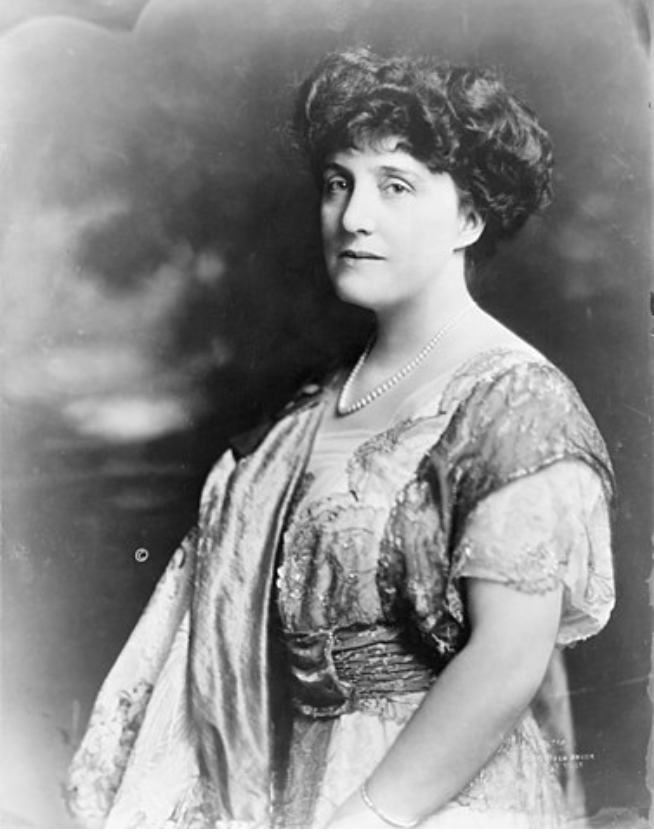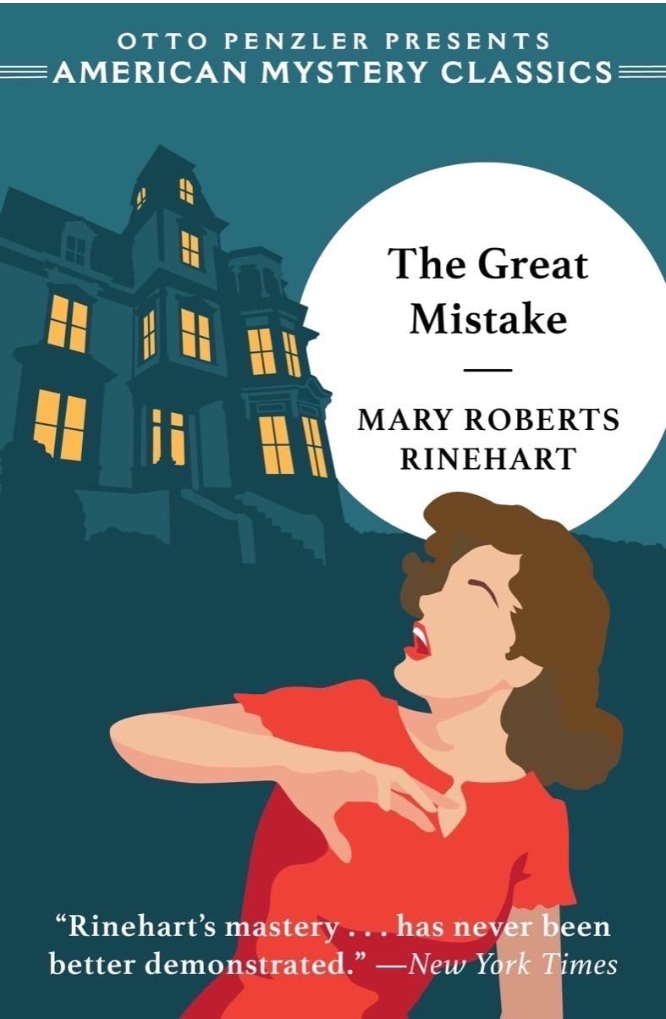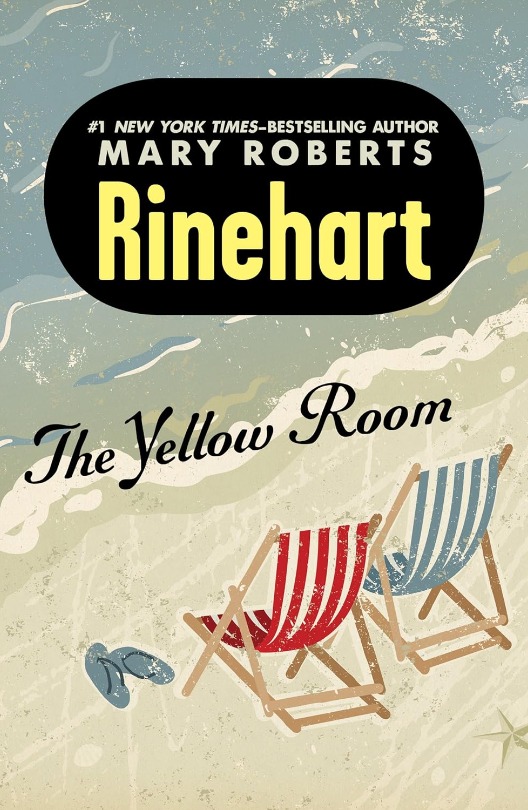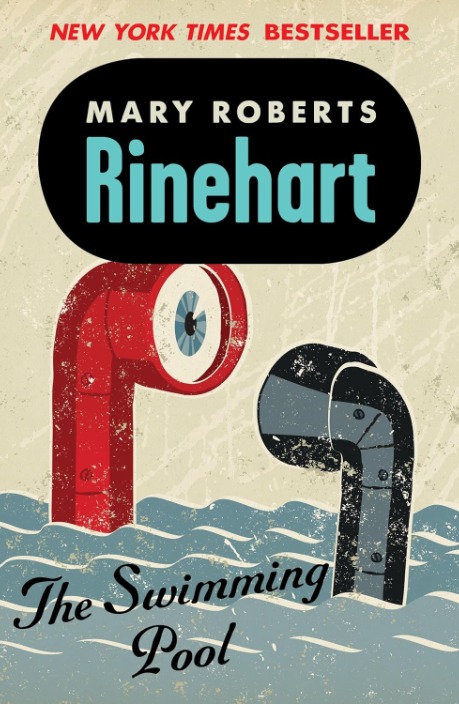
Mary Roberts Rinehart
B
During the peak of her forty-year writing career, Dorothy Roberts Rinehart was called the American Agatha Christie. Her novels outsold those of her male counterparts and reached the top of the general fiction bestseller lists. Unlike Christie, Rinehart’s books were more often romantic suspense stories than pure mysteries. Her novels featured female protagonists getting themselves into and out of trouble. But Rinehart could craft tricky mysteries that would have made Agatha Christie proud. The Great Mistake, written in 1940, provides relatively little suspense, but is a complex tale of multiple murders that might have given Hercule Poirot pause. Unfortunately, the book is also an example of a peculiar stylistic convention Rinehart popularized that many enjoy, but I find annoying.
Rinehart popularized the “had-I-but-known” school of mystery/suspense writing. I can best summarize the convention by referencing the principle of Chekhov’s gun. That maxim states that if there’s a gun on the wall in Act One of a Play, it must go off by Act Three. In the had-I-but-known suspense writing style,
the protagonist would say: “Had I but known the gun on the wall was loaded, the next day’s tragic events might never have occurred.” Rinehart uses her favorite device several times in The Great Mistake, which, in my opinion, was the book’s great mistake.
The protagonist of The Great Mistake is Pat Abbott, social secretary to wealthy widow Maud Wainwright. Maud and her son, Tony, live in a gigantic mansion called The Cloisters, a former European monastery that Maud’s late husband had taken apart and reassembled in the United States. The Cloisters and other homes of the ultra-wealthy residents of the town of Beverly lie in what’s called the “Hills” above the city itself. Pat grew up and lived in the town proper when Maud hired her. In contrast to the book’s scenes set in Beverly, the elite lifestyles of the Wainwrights and the other families living in the Hills stand out. The Hills’s residents spend much of their time throwing elaborate dinner parties. Pat even confesses her job requires skills in golf, tennis, and horseback riding rather than shorthand and typing.
The Great Mistake is a murder mystery precipitated by the arrival of two long-missing individuals whose more recent whereabouts are shrouded in their own mysteries. First, Don Morgan, the ne’er-do-well husband of one of the Wainwrights’ neighbors, returns from France. Soon after, Tony’s equally ne’er-do-well wife, Bessie, returns from her European sojourn. Those who have read even a single mystery will suspect the two reappearances are connected, and they are. In the subsequent months, many bizarre events take place, including three murders, a disappearance that may be a fourth murder, and several assaults. Pat is at the center of two assaults. She falls down an open elevator shaft (the Cloisters has its private elevator) and later gets clunked in the head. Since turnabout is fair play, Pat later shoots a policeman. (This is not a spoiler since Pat names the cop and mentions his impending fate several times in the novel.)
Besides being the narrator of The Great Mistake, Pat occasionally plays detective. She’s more of a Nancy Drew than a Miss Marple. The local chief of police solves the mystery here. However, Pat goes undercover in Beverly to befriend a secretary who worked with a younger woman who abruptly left for France at the same time as Don Morgan 15 years earlier. The younger woman’s identity and current whereabouts are part of the book’s overall puzzle.
As a mystery, The Great Mistake is as Byzantine as I can recall. The book is about 400 pages long and takes place over several months. That timeline and the leisurely pace of the police’s usually fruitless investigations allow many bizarre events to transpire. As these strange events multiplied, I wondered if the author would eventually tie everything together by the novel’s conclusion. To my relief, Rinehart explains everything. The solution relies on several coincidences that occur rarely in real life but far more often in mysteries. These coincidences make it nearly impossible for readers to figure out the solution here other than by sheer lucky guessing. I think genre fans will enjoy the ultimate revelation, even though the author makes them wait until the last possible moment to do so.
The book’s length also allows the author to develop the characters well. As the book progresses, Pat, Maud, Tony, Bessie, and several others come alive. Rinehart reveals enough about the eventual victims to make their deaths seem pre-ordained in a Shakespearean sense rather than mere necessary elements out of a game of Clue. Several characters are unlikeable, but they are unlikeable in their unique ways. I enjoyed Pat’s conversations, digressions, and descriptions, even though they made the book much longer than it would have been at the pen of another author. Only rarely did I wish the author would get on with it.
Unfortunately, most of my annoyance centered on the author’s continued use of had-I-but-known foreshadowing. Rinehart does so in the worst possible manner by highlighting clues. Authors from Arthur Conan Doyle to Agatha Christie and beyond took great pride in revealing clues as their mysteries progressed, yet concealing them among innocent details and red herrings. Rinehart calls attention to some clues, like Maud’s unwillingness to answer the one working telephone in the mansion (unthinkable today, but not that unusual in 1940). The effect is like having Dr. Watson say: “Only later would I realize the significance of the dog’s failure to bark that night.”
Despite my frustration with the author’s overuse of the had-I-but-known device, I enjoyed The Great Mistake. The central mystery reminded me of those found in Ross MacDonald’s Lew Archer novels, with the sins of the past emerging to disastrous effect in the present. Also, the author’s loving attention to how the Wainwrights and others lived reminded me of our recent obsession with reality TV shows like the various Real Housewives series. But despite their wealth, the characters always struck me as real people. Fans of Golden Age mysteries or those willing to try this type of book would make a mistake by avoiding this novel.
In this clip, Sara Bitticks of the Auburn Historical Society discusses the life and works of Mary Roberts Rinehart:
Read other reviews of The Great Mistake:
Mary Roberts Rinehart was an American writer, often called the American Agatha Christie, although her first mystery novel was published 14 years before Christie's first novel in 1922. Rinehart is considered the source of the phrase "The butler did it" from her novel The Door (1930), although the novel does not use the exact phrase. Rinehart is also considered to have invented the "Had-I-But-Known" school of mystery writing, with the publication of The Circular Staircase (1908). Rinehart adapted The Circular Staircase into a highly popular stage play in 1920, The Bat, which was filmed three times, most notably in 1959, starring Vincent Price and Agnes Moorehead. Comic book creator Bob Kane later credited the title villain in The Bat as the inspiration for his classic character, Batman.
Header Photo: "Riot Radio" by Arielle Calderon / Flickr / CC By / Cropped
Silver Screen Video Banner Photos: pedrojperez / Morguefile; wintersixfour / Morguefile
Join Button: "Film Element" by Stockphotosforfree
Twitter Icon: "Twitter Icon" by Freepik
Facebook Icon: "Facebook Icon" by Freepik
LinkedIn Icon: "LinkedIn Icon" by Fathema Khanom / Freepik
Goodreads Icon: "Letter G Icon" by arnikahossain / Freepik
Mary Roberts Rinehart: "Mary Roberts Rinehart (1914)" by Theodore C. Marceau / Library of Congress / Public Domain
Certain images on this site appear courtesy of Amazon.com and other sponsors of Silver Screen Videos for the purpose of advertising products on those sites. Silver Screen Videos earns commissions from purchases on those sites.
© 2024 Steven R. Silver. All rights reserved.






